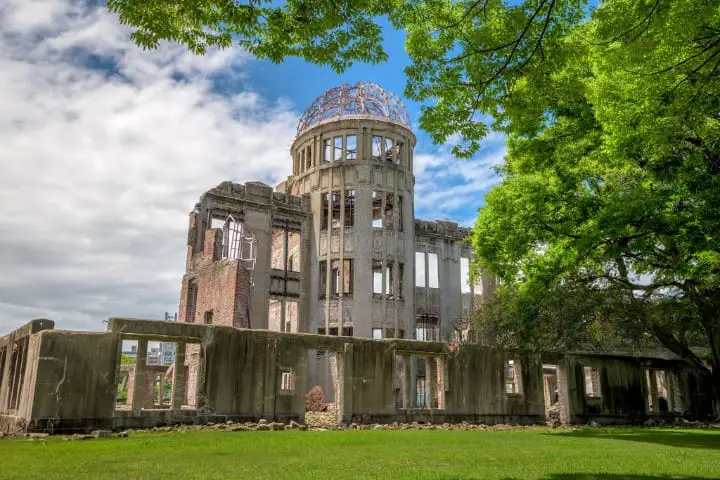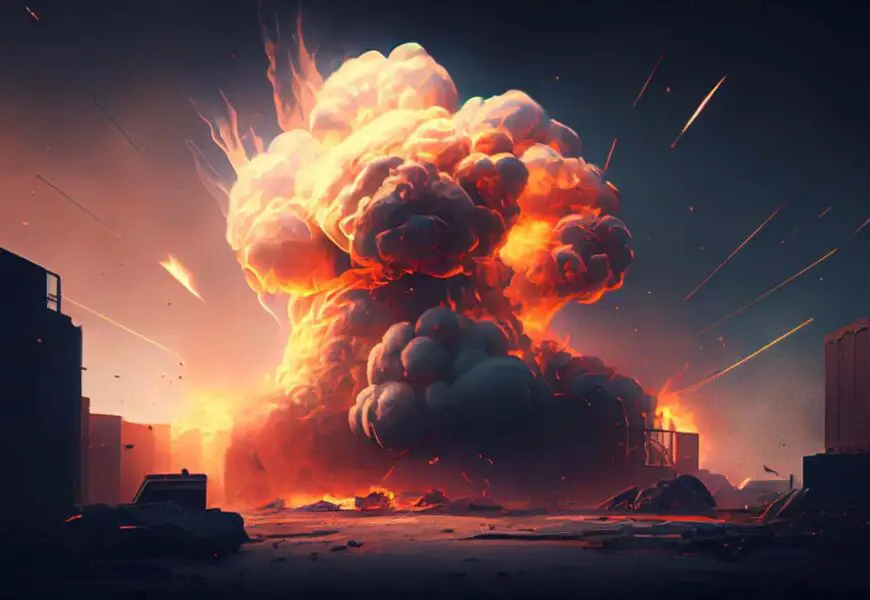Atomic bombings of Hiroshima and Nagasaki in 1945 marks a groundbreaking moment in human history – the bombings of Hiroshima and Nagasaki with nuclear bombs. At an inflection point during World War II, decisions to unleash nuclear destruction upon these Japanese cities forever altered warfare as well as international relations.
Manhattan Project:
The Manhattan Project was a monumental research and development undertaking during World War II that led to the creation of the atomic bomb. Key figures such as J. Robert Oppenheimer often called the “father of the atomic bomb,” and Enrico Fermi, a pioneering physicist, were instrumental in this project. Their collective efforts at sites like Los Alamos, New Mexico, culminated in a new era of military and scientific capabilities.
Events leading up to the Bombings:
A complex interplay of military strategy and diplomatic considerations influenced the decision to target Hiroshima and Nagasaki. The Potsdam Declaration in July 1945 demanded Japan’s unconditional surrender, which Japan did not immediately accept. Strategic bombing was seen as a means to accelerate Japan’s surrender, minimize Allied casualties, and demonstrate power to the Soviet Union.
Atomic bombings of Hiroshima and Nagasaki in 1945
On August 6, 1945, the “Little Boy” uranium bomb was dropped on Hiroshima, and on August 9, 1945, the “Fat Man” plutonium bomb devastated Nagasaki. These bombings resulted in the immediate deaths of approximately 70,000 in Hiroshima and 40,000 in Nagasaki, with tens of thousands more dying from injuries and radiation exposure in the following months.
Controversies Surrounding the Bombings:
The ethical and moral debates surrounding the bombings focus on the necessity and proportionality of using nuclear weapons. Critics argue that alternatives, such as a demonstration explosion or more conventional military tactics, could have induced Japan’s surrender without the massive civilian casualties.
Long-Term Consequences:
Survivors, known as Hibakusha, faced long-term health effects, including increased rates of leukaemia, solid cancers, and other radiation-induced diseases. The environmental impact was profound, with significant areas of both cities being rendered uninhabitable due to radiation.
Reflections on the Hiroshima and Nagasaki Legacy:
The legacy of Hiroshima and Nagasaki has been a driving force behind international nuclear disarmament efforts. These events serve as a grim reminder of nuclear warfare’s catastrophic potential, influencing global treaties aimed at preventing the proliferation of atomic weapons.
Memorials & Commemorations:

The Hiroshima Peace Memorial Park and the Nagasaki Peace Park serve as poignant reminders of the bombings’ aftermath, dedicated to the memory of the victims and the promotion of world peace. These sites host annual commemoration ceremonies on the anniversaries of the bombings.
Media Representations:
Films like “Grave of the Fireflies” and documentaries such as “White Light/Black Rain” have contributed significantly to public understanding and the emotional processing of the bombings’ impacts. Literature, including John Hersey’s “Hiroshima,” provides personal narratives and reflections on the human cost of nuclear warfare.
Education and Awareness
Integrating the history of nuclear bombings into education curricula is vital in creating awareness among future generations, instilling knowledge from their experience that could potentially prevent similar catastrophic events from repeating themselves in the future. Learning from history gives us the tools we need to avoid their repetition.
Scholars and Historians Offer Insight into Bombing Debates
Historians continue to provide invaluable perspectives into ongoing debates over bombings. Their insights help illuminate decision-making processes, ethical considerations, and international relations implications in greater depth.
Cultural Impact:
The bombings have inspired a wide range of artistic and literary works, serving as a means for survivors and subsequent generations to process and express the trauma of these events. These cultural artefacts contribute to a global understanding of the bombings’ human toll.
The Role of Technology in Warfare
Since 1945, advances in weaponry have raised ethical considerations within modern warfare. Atomic bombings provided us with an illustration of this potential catastrophe and led us to consider more responsible technological development and usage practices in developing military technologies.
Diplomatic Implications:
The atomic bombings significantly impacted post-war international relations, leading to the establishment of the United Nations and the Treaty on the Non-Proliferation of Nuclear Weapons (NPT) to prevent the spread of nuclear weapons and promote disarmament.
Advocating Peace and Disarmament
Advocating peace and disarmament has long been seen as the only response to the humanitarian appeal stemming from nuclear bombings, with grassroots movements and global initiatives actively working toward creating a romantic vision of a world free of nuclear weapon threats.
Personal Narratives
Individual accounts of Hibakusha’s survival and resilience humanize the statistics by creating an emotional link with 1945 events, reminding us of its significance for shaping collective memory. Such narratives demonstrate empathy’s critical role in shaping this collective history.
Future Perspectives
Global commitment to nuclear disarmament demands ongoing efforts. Education, commemoration, and diplomacy all play critical roles in shaping an equitable and peaceful world; remembering past conflicts creates an atmosphere conducive to cooperation over conflict.
Conclusion
The atomic bombings of Hiroshima and Nagasaki remain etched in history as stark reminders of nuclear warfare’s devastating consequences. As we reflect on the lessons learned from these tragic events, committing to a future where such destruction is never repeated is imperative. Through education, diplomacy, and international cooperation, we can honour the memory of those lost by working tirelessly towards a world free of nuclear threats.
FAQs
Q: In what ways have survivors contributed to our understanding of atomic bombings since 1945?
A: Hibakusha survivors share their accounts to spread awareness of nuclear weapons’ effects on humanity while advocating for peace.
Q Have there been any official apologies from nations involved in bombings?
A: Although expressions of regret and acknowledgment of suffering caused have taken place, formal apologies remain subject to ongoing discussion and debate.
Q: How are people commemorating the anniversary of atomic bombings?
A: Events commemorating this occasion include memorial services, peace talks, and calls for nuclear disarmament.
Q: How is the United Nations currently helping prevent nuclear warfare?
A: Through disarmament and nonproliferation initiatives, UN members strive to prevent nuclear weapon usage while upholding global peace and security.











[…] naval battles and island-hopping campaigns against Japan, culminating in the strategic use of nuclear weapons on Hiroshima and Nagasaki in August 1945, leading to Japan’s surrender and the end of World War […]